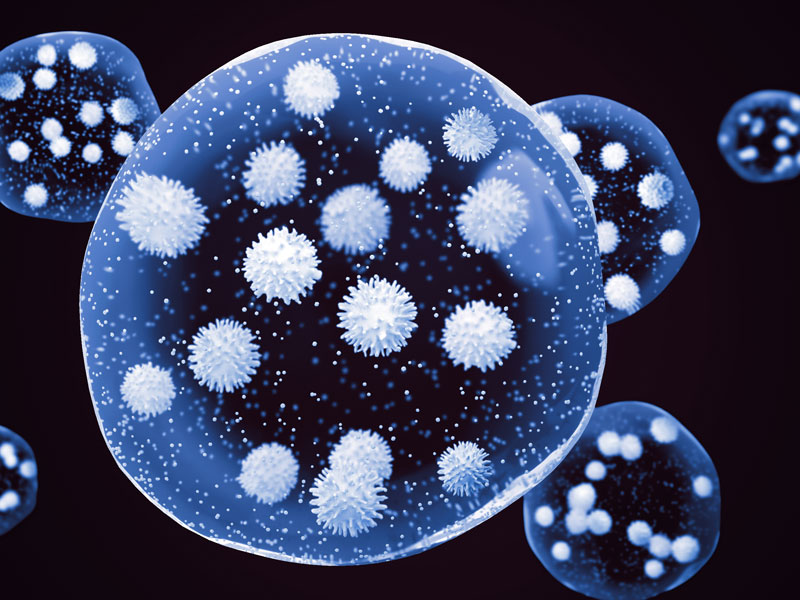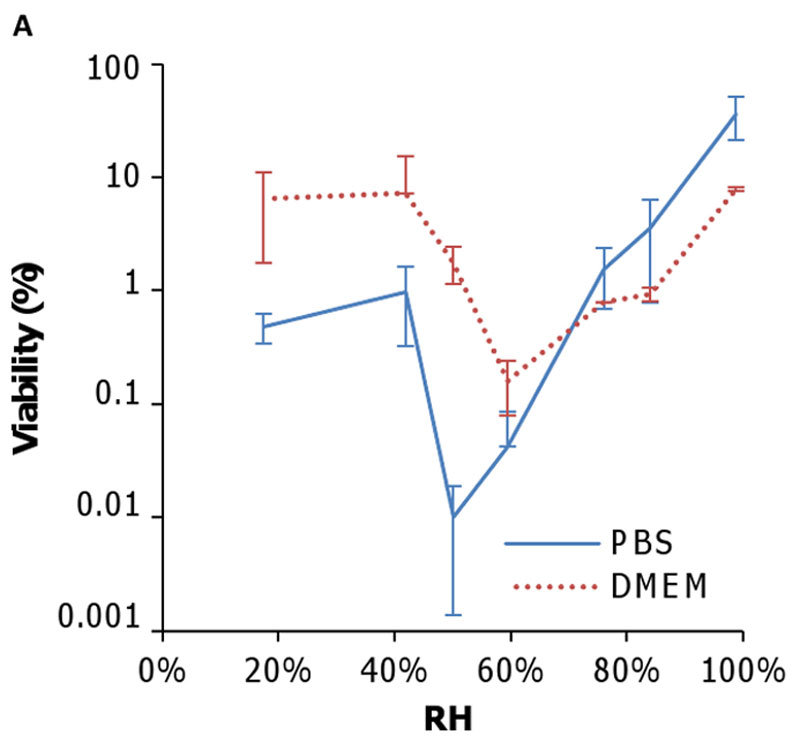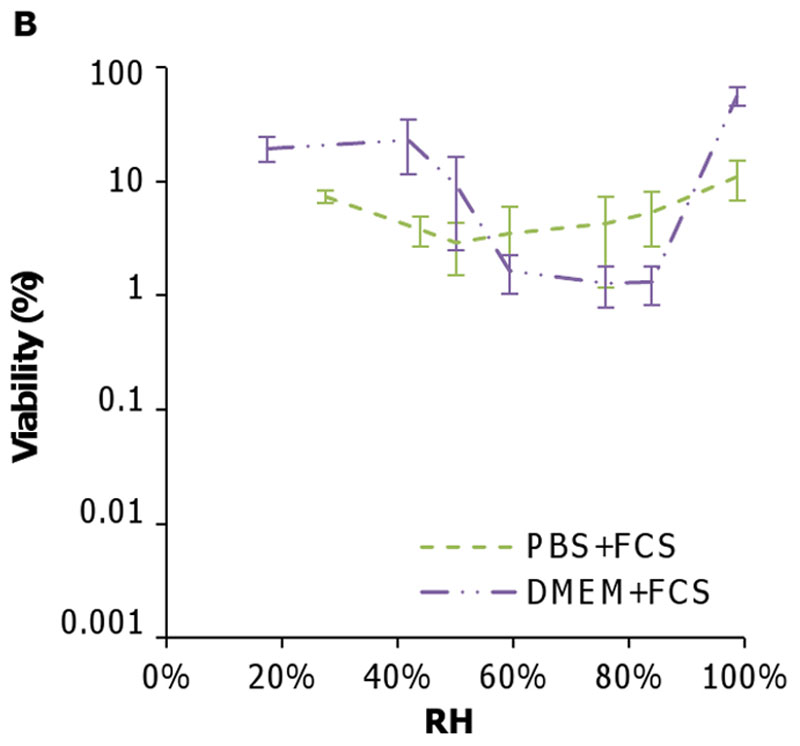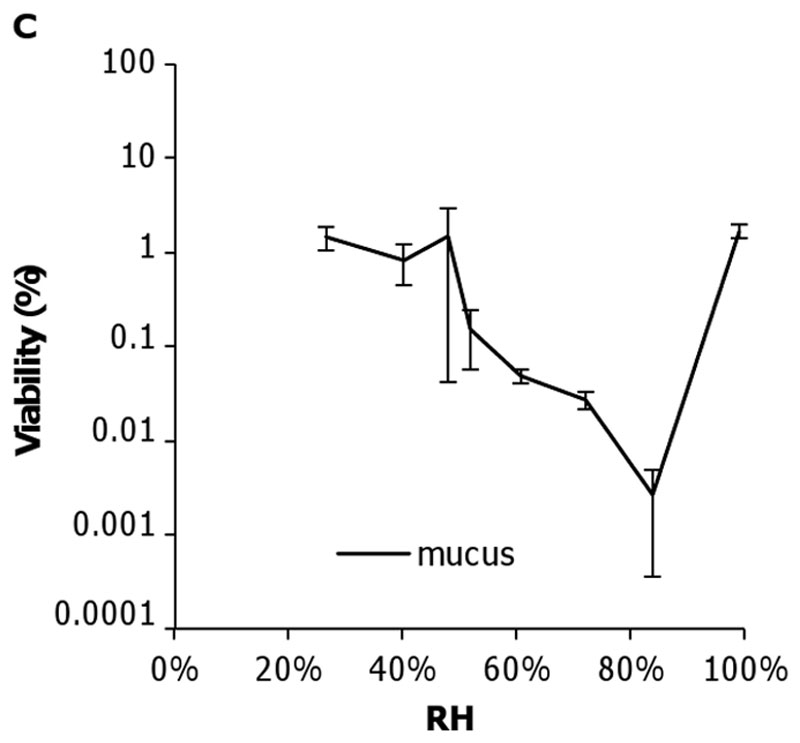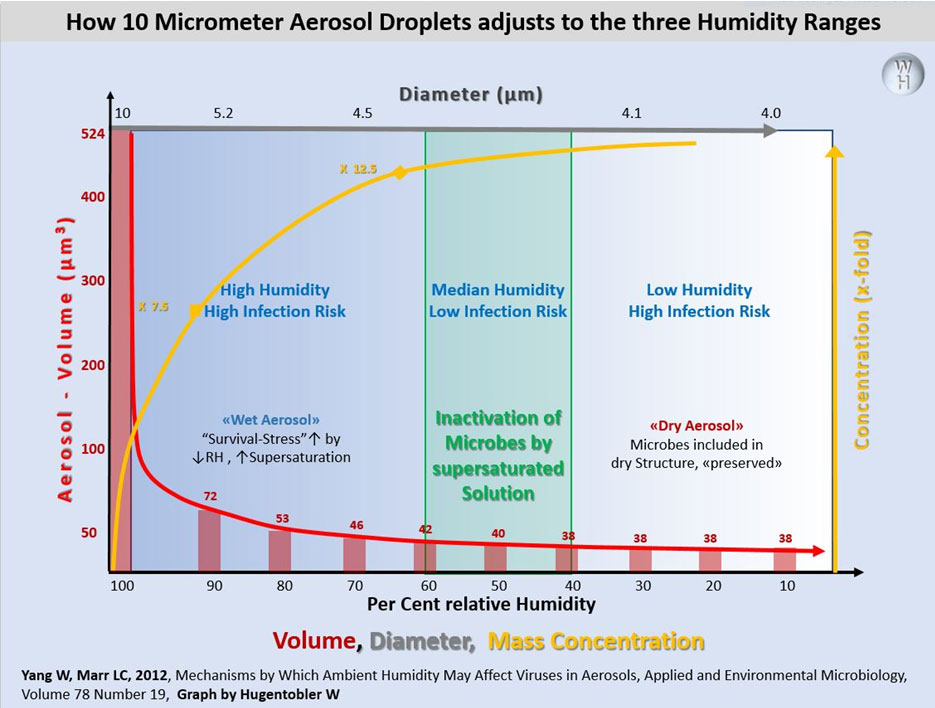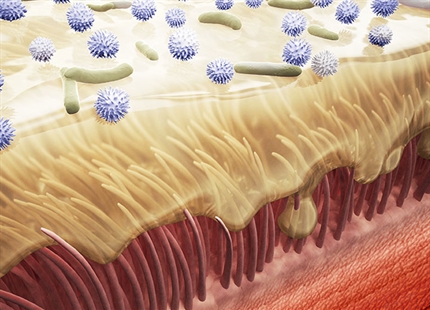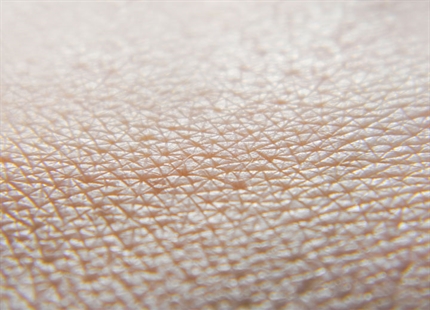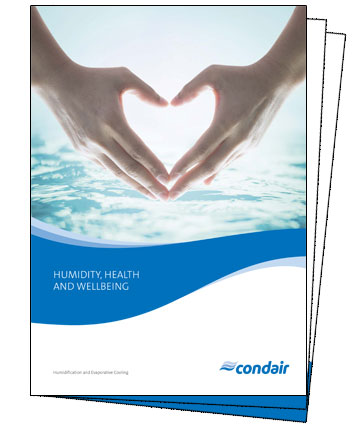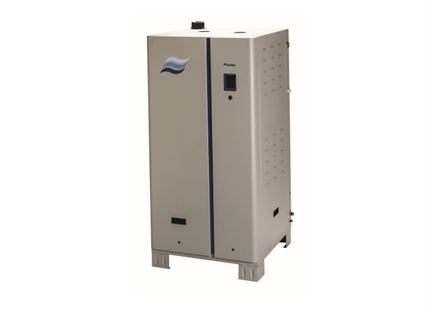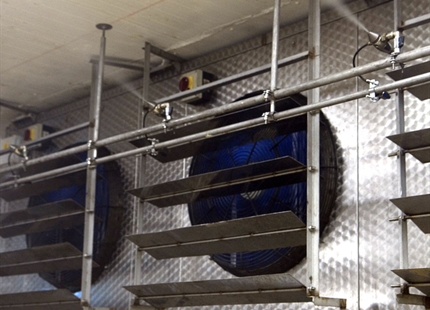Relationship between Humidity and Influenza A Viability in Droplets and Implications for Influenza’s Seasonality
Yang W, Elankumaran S, Marr L
Abstract
This study aimed to determine the relationship between ambient humidity and viability of the influenza A virus (IAV) during transmission between hosts and to explain the mechanisms underlying it.
The authors measured the viability (survival) of IAV in droplets consisting of various solutions. The different solutions were chosen to isolate the effects on the virus of the salts and proteins found in respiratory fluid, and in human mucus, at relative humidity levels ranging from 17% to 100% relative humidity (%RH).
The flu virus was suspended in droplets of two salt containing solutions (PBS and DMEM), identical solutions that were enriched with proteins (FCS) and in the sterilized human mucus of a one month old baby.
In a desiccator, droplets were exposed to various relative humidity (RH) ranges between less than 17.5% and 99.1%RH at room temperature (20-24°C).
Results
- Virus containing droplets of all solutions crystallized at RH’s just below 50%. In dried up droplets, viruses seem to be protected and stay viable (see fig. A, B & C).
- In pure salt and combined salt/protein suspensions, viability was lowest just above 50% RH, before desiccation occurred. Proteins increase viability in suspensions (fig. B), probably by reducing the harmful effect of high salt concentration.
- In mucous, viability was 10 - 500 times lower than in other media, viability was lowest just above 80% RH.
Conclusions
Authors define three regimes, governing the viability of IAV’s:
- Physiological conditions (≈ 99-100%RH), where solute concentrations are harmless and viability is maintained
- Concentrated conditions (50 to 99%RH), where ongoing evaporation leads to raising salt concentrations, increasingly harmful for IAV
- Dry conditions (<50%RH), where solutes are completely dried out (salts are crystallized), all water is lost and virus viability is maintained.
Findings provide valuable explanations for influenza seasonality.
In temperate climates, low indoor humidity enhances virus survival through crystalization of salts in airborne droplets and extends airborne floating time for infectious droplets due to a reduced droplet size through evaporation.
In tropical regions, high temperatures may suppress transmission, particularly through the aerosol route. However, lower temperatures and near-saturated RH during the rainy season creates an opportunity for transmission via different mechanisms for large droplets and very small aerosols.
Large droplets would settle more quickly due to gravitation because they do not shrink as much at ∼100% RH. Once settled on a surface, they may serve as a reservoir for contact transmission, since IAV is well preserved at ∼100% RH, as shown in this study. On the other hand, submicron aerosols such as those exhaled in human breath would remain aloft, and thanks to the lower temperatures and suitable RHs for virus survival, transmission by these submicron droplets via the aerosol route might still be effective.
Scientific studies main menu